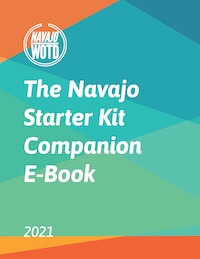łitso
yellow
lth-ih tsoh
The Navajo word łitso is commonly translated directly as yellow. Whereas the English word is an adjective, in Navajo it is a state. So łitso, as with all other Navajo colors, operates as a verb.
This is why łitso comes at the end of statements. For example, “Chidí éí łitso” is the same thing as “the car is yellow.” The word “chidíłtsooí” is “the car that is yellow.”
A plural form of this word is daaltso – they (3rd person) are yellow – and is sometimes used instead of the actual thing they are describing. “The yellow ones” can refer, for instance, to the yellow m&ms if they are the only notable yellow objects around.
There is a similar word łitsxo. That extra ‘x’ forces the word to be pronounced with more force resulting in an amplification of sorts. In this case, it refers, more or less, to an intense yellow, or orange-colored.
